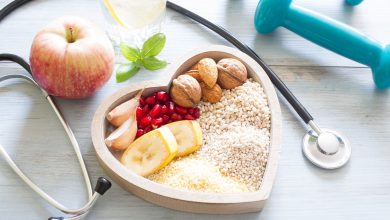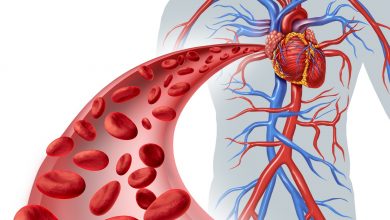5 Ways to Improve Your Blood Flow

Poor blood flow can cause several unpleasant symptoms in the body, and these symptoms are more than just uncomfortable. They can impair your quality of life and reduce your productivity. If you have any of these symptoms, it’s time to improve your blood flow. (1)
- Varicose veins
- Ulcers in the legs or feet
- Changes in skin color
- Muscle cramping and joint pain
- Fatigue
- Digestive problems
- Memory loss
- Difficulties with concentration
- Swelling in the legs, ankles, and feet
- Cold hands and feet
- Tingling and numbness in hands and feet
Poor circulation can be caused by several health conditions like Raynaud’s disease, obesity, diabetes, and peripheral artery disease. (2) (3) (4) (5) (6)
However, there are a few measures you can take to improve your blood flow.
1. Exercise Regularly

Engaging in regular exercise can improve your blood flow. What makes exercise so good for blood is the fact that it stimulates your heart, which is at the core of your circulatory system.
Exercise is known to increase nitric oxide output. (7)
Nitric oxide is the key to boosting your circulatory system since it can induce vasodilation – the widening of the blood vessels. As your blood vessels widen, they allow more blood to pass through them. As a result, your blood circulation can improve. (8)
Exercise also has a beneficial effect on your endothelium, which is the lining within your blood vessels that produces nitric oxide. (9)
Another study has noted that exercise improves your ability to inhale more oxygen and use it better. Exercise also has a positive effect on the ability of the arteries to dilate. Blood vessels that can widen easily to facilitate blood flow allow the muscles to receive more oxygen. (10)
2. Maintain a Healthy Weight

Keeping your weight within the healthy range is beneficial for your circulatory system.
According to one study, overweight women experienced better blood flow once they reduced their weight to healthy levels.
Another great finding of this study was that these women saw an increase in their adiponectin levels. Adiponectin is a protein that has an important role in vascular function. (11)
Therefore, if you are overweight, you should try to lose weight for improved blood flow.
3. Add Fish to Your Diet

Oily fish, rich in omega-3 fats, improves both cardiovascular function and blood flow.
A study was carried out over the past two decades on omega-3 fatty acids. According to researchers, oily fish reduces the risk of cardiovascular disease due to its rich omega-3 content.
The research showed that oily fish can have a protective effect on heart, improve lipid profile, and boost nitric oxide synthesis. Several other benefits were noted besides improved circulation and cardiac health.
Examples of fatty fish that provided these positive effects include tuna, sardines, mackerel, sardines, and salmon.
Among vegetable sources, kale appears to be one of the richest sources of omega-3 although it has much smaller amounts as compared to oily fish. (13)
4. Eat Nitrate-Rich Foods

You should try to incorporate more nitrate rich foods in your diet since nitrates can lead to better blood circulation.
Nitrates are known to be effective vasodilators. This means that nitrates widen your blood vessels and improve blood flow. Hence, higher amounts of oxygen-rich blood may reach all parts of your body. Not only do nitrates widen your arteries to facilitate the flow of oxygen rich blood, they also relax your veins so that your heart may have to do less work while pumping blood. Nitrates are now available in pill form to address a number of health issues like cardiac problems. (14)
However, nitrates are also present in many of the foods that we eat. You can find the highest amounts of natural nitrates in foods like celery, red-lead spinach and arugula.
Red beets are a particularly good source of nitrates. Not only do they provide high amounts of nitrate per unit weight, the nitrate bioavailability is also high.
5. Drink Lots of Tea

Both black and green teas have a positive effect on cardiovascular health- according to research.
A study published in the 2001 issue of Circulation investigated the mechanisms by which tea can improve cardiovascular health. It was found in prior research that tea has a positive effect on the endothelium. The endothelium is a thin lining within your blood vessels that produces different chemicals to support the cardiovascular system, immune system, and other functions.
The research paper showed the mechanisms by which flavonoids in tea can reduce oxidative stress and reverse endothelial dysfunction. What this means is that the antioxidants in tea are good for the health of your blood vessels. (15)
Healthy blood vessels are crucial for better blood flow.
Another study shows that drinking green tea can reduce the incidence of coronary artery disease. (16)
The research involved a population study in Japan that studied whether or not green tea consumption in the country affected coronary artery disease (CAD). Researchers concluded that polyphenolic antioxidants (of which green tea is an excellent source) reduce the incidence of this medical condition.
Researchers found an inverse relationship between tea consumption and CAD. This means that increased green tea consumption reduces the risk of CAD.
Supplements Worth Considering
You can also take supplements to boost your circulatory system. N-O Sanguenol has a wide spectrum of antioxidants and nutrients that can reduce oxidative damage. It also has nutrients that facilitate vasodilation for improved blood flow and increased production of nitric oxide. Click here to learn more about Nitric Oxide Sanguenol.
Need a reason to try Nitric Oxide Sanguenol? We have the 5!
Click here to read the top 5 reasons you need to try Nitric Oxide Sanguenol.
References
(1) https://www.medicalnewstoday.com/articles/322371.php
(2) https://www.ncbi.nlm.nih.gov/pmc/articles/PMC1852303/
(3) https://www.ncbi.nlm.nih.gov/pmc/articles/PMC5634904/
(4) https://www.ncbi.nlm.nih.gov/pmc/articles/PMC5822764/
(5) https://www.ncbi.nlm.nih.gov/pmc/articles/PMC2894725/
(6) https://www.ncbi.nlm.nih.gov/pmc/articles/PMC5110514/
(7) https://www.ncbi.nlm.nih.gov/pmc/articles/PMC5463976/
(8) https://www.medicalnewstoday.com/articles/320793.php
(9) https://www.ncbi.nlm.nih.gov/pmc/articles/PMC6199517/
(10) https://www.ahajournals.org/doi/full/10.1161/01.cir.0000048890.59383.8d
(11) https://www.ncbi.nlm.nih.gov/pubmed/18378021
(12) https://www.ncbi.nlm.nih.gov/pmc/articles/PMC3712371/
(13) https://www.livescience.com/50818-kale-nutrition.html
(14) https://www.texasheart.org/heart-health/heart-information-center/topics/nitrates/
(15) https://www.ahajournals.org/doi/full/10.1161/01.cir.104.2.151




